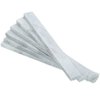JackSprat
Member
I was looking at dies on Ebay,and stumbled onto a file trim die.
I didn't even know they existed,but they seem pretty handy,and real quick..I figure they probably have a drawback because it seems they arn't a popular method of case trimming..Why do more people not use them?
I didn't even know they existed,but they seem pretty handy,and real quick..I figure they probably have a drawback because it seems they arn't a popular method of case trimming..Why do more people not use them?


